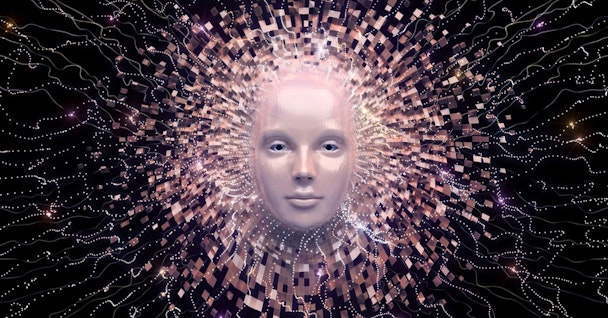Cyborgs are the future of advertising
The conversation around artificial intelligence (AI) and machine learning today seems de rigueur, particularly in light of the recent introduction of “chat bots” by Facebook and other notable tech companies. With each new advancement in the field also comes the obligatory pronouncements of the impending 'robot apocalypse'. Not so much in the Terminator, Skynet-esque sense, but rather the extent to which robots can eventually replace humans in roles where decision-making is more constrained.

Can intelligent machines and humans work together successfully?
While there have been some promising developments, machine-based intelligence is still at the stage where it can increase efficiencies to an almost infinite scale, but still struggles to provide adequate context to the intended audience. How then can there be a role for them in creative process?
I would argue that AI can be used to drive creativity today, but only in tandem with input from human designers.
The creative/contextual disconnect
One of the greatest shortcomings of AIs in regards to developing written and visual creative is the lack of ability to understand the concepts of nuance and subtlety.
For example, Sarah O’Connor (a journalist for the Financial Times), recently went head-to-code with an AI called Emma, with the goal of writing an article on the latest U.K. employment figures.
Emma did in fact file her story faster than Sarah, completing the story in 12 minutes (compared to Sarah’s 35). The copy generated was factually correct and included logical, context-based conclusions such as the possibility of a “Brexit” (the exit of Great Britain from the European Union) — which, as we know, did eventually occur. But what Emma lacked was the ability to distinguish the newsworthy from the dull. She correctly pointed out that the jobless rate was unchanged, but she overlooked that the number of jobseekers had risen for the first time in almost a year.
The same issue exists in regards to visual context. Most AIs have the ability to analyze images and select similar ones (Google’s image search is an everyday example). However, they still struggle to understand the semantic definitions of the images they are looking at. Below are some examples from a paper, 'Deep Visual-Semantic Alignments for Generating Image Descriptions' by Andrej Karpathy, Li Fei-Fei, that demonstrate how contextual analysis can go very right or very wrong.
Wrong: “A young boy is holding a baseball bat.”

Correct: “Little girl is eating a piece of cake.”

Correlating creative composition to targeting and performance data
In digital marketing, the ad serve machine of Facebook is amazing, drilling down to target segments in a matter of days and hours. But there is no way to close the loop on what ad creatives work best without a human to draw design and creative conclusions.

This cyborg (machine + human) approach can be put into place today, in real time. Compositional analytical tools and campaign data can be compiled, analyzed, and harnessed.
Closing the data-design loop
The scale of creative analytics and content/context analysis required is staggering: there can be thousands of keywords. Multiply that by thousands of potential interests, demographic data, and dozens of ad images — manual analysis is unfeasible.
With the application of advanced AI, sense can be made from this madness, and actual prediction of ad performance is possible. This process of creative optimisation closes the loop and makes the design process a self-reinforcing and learning system. You can anticipate campaign performance to improve by 3-4 times, depending on parameters.
The missing link is to feed the information back to designers in a comprehensible way as the campaign unfolds, so that they can make creative interventions to replace ads that do not resonate and design more of what is seen to be working.
Context and design intuition
Today, there are few proof points that illustrate how an AI can beat the design intuition of a human being. Computers still lack the creativity, capacity for ideation, and the ability to understand nuance and context the way a human designer does. For example, a machine would never be able to understand the subtleties and counterintuitive brilliance of Volkswagen’s classic 1960 'Lemon' ad. This is where humans will continue to rule.
However, by working with human designers, AIs can do what they do best — churn through millions of data points to draw statistically correct conclusions, learning incrementally. But ultimately leaving the creative 'heavy lifting' to us.
Content by The Drum Network member:

ReFUEL4
Winner of Facebook's 2016 Innovator of the Year, ReFUEL4 is the world's leading online ad creative management platform.
An official Facebook and Instagram...

